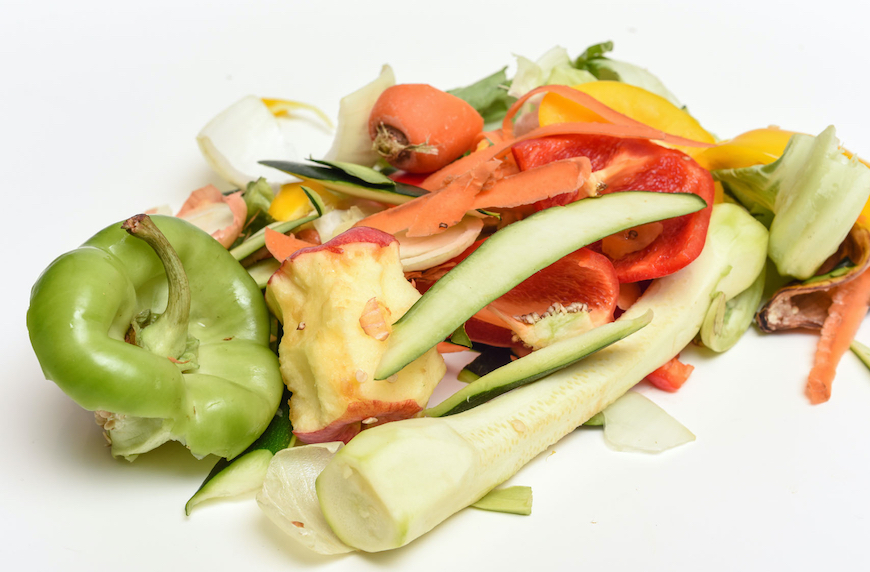7 Simple Low-Waste Cooking Tips Everyone Needs
Minimizing your environmental footprint in the kitchen is as easy as paying a bit of extra attention—and embracing some low-waste cooking swaps.

Published
The kitchen is where the magic happens. When approached with thought, whole and healthy ingredients are transmuted into meals designed to be shared with loved ones, the act of cooking an act of self-care. But there is a downside to our culture's approach to food: the waste involved is detrimental to the health of our planet. Fortunately, a few simple low-waste cooking hacks can help to alleviate the issue.
According to the Environmental Protection Agency (EPA), an estimated 63.1 million tons of food waste was generated in 2018 by Americans alone. In addition, a cavalier approach to kitchenware can translate to additional municipal solid waste (MSW), filling our landfills with items that should have enjoyed longer lives in our homes.
From meal planning to preservation to quality cookware, these tips will ensure that your kitchen is a low-waste space.
7 Simple Ways to Cook With Less Waste
1. Plan Meals

A bit of extra forethought can mean a huge reduction in food waste. Planning meals for you and your family prevents overshopping and is a great way to keep your grocery store spending at reasonable levels. Planning out two to three weeks of meals, shopping with quantities in mind, and regular food prep all combine to make your cooking life easier and less wasteful.
Meal planning also helps improve the diet and health of a person simply because they are including more nutritional ingredients to cook with, and are eating less healthy options outside their home—which sounds like a pretty sweet deal.
2. Choose Cookware That’s Built to Last

When it comes to cookware, you typically have four: cast iron, nonstick, stainless steel, and ceramic. Selecting your perfect pans can be tough, but this is one area where quality is key, both for the health of the environment and the humans in your home.
Many nonstick coatings produce harmful byproducts, not to mention release toxic chemicals when overheated. Plus, they only enjoy a lifespan of around three to five years. Cast iron pans, on the other hand, last for generations and when taken care of properly can lend to even more flavorful food. That said, cast iron is less multi-function than stainless steel (which can commonly be found secondhand) or ceramic.
Brands like Caraway boast options that are long-lasting, toxin-free, and aesthetically pleasing, meaning that your cookware can stay in the kitchen and out of the landfill.

3. Store Food Properly

Food storage is a huge factor in any low-waste kitchen. Check storage directions on labels and store and prioritize ready-to-eat food ahead of non-perishables—a method known as "First In, First Out," commonly used by chefs.
Store produce in Veggie Saver Produce Bags to ensure peak freshness, and cover partially-used fruits and vegetables with Food Huggers to keep them viable. Herbs can be stored with stems in water, sliced bread in the freezer, and leftovers topped with convenient fabric bowl covers. These simple yet effective methods ensure that your food stays fresh and out of the trash can or compost bin.
4. Get Creative With Preservation

Mastering the arts of pickling and preservation ensures that food scraps stay edible for months or even years. Craft jam with aging fruit, use a dehydrator to turn mealy apples into healthy snacks, or learn how to pickle or ferment veggies for a long shelf-life and probiotic benefits.
5. Avoid Plastic Packaging

So far, eight states have banned single-use plastic bags. But you don't need to wait until the material is outlawed to curb your use. Remember to bring reusable bags (it doesn't need to be a giant tote bag—any will do), bring along produce bags, or ditch bags altogether and opt for a cardboard box.
Even better, direct your dollar toward the vendors at your local farmers' market, where you’ll find in-season produce without the extra waste. You can also practice bulk shopping and always keep a strong supply of grains and other important household staples.

6. Reuse Stems, Seeds, and Scraps

When cooking with whole foods, try to use the whole foods. Low-waste advocates like Max La Manna suggest trying recipes that use the entire fruit or vegetable, from seed to skin. Should you be left with scraps and skins, store them for future use in stocks, stews, or sauces.
7. Host a Potluck With Friends

Consider planning a regular potluck with friends, family, or neighbors. Have everyone bring their favorite dishes or week’s leftovers to avoid throwing out tired dishes, preventing food waste in favor of a delicious celebration.

How to Clean a Stove Top: Your Step-by-Step Guide
Learn how to clean your stove top, be it electric or ceramic glass, to ensure the appliance stays in use (and out of landfills) for longer.

5 Food Waste Apps That Are Good for the Planet and Your Wallet
These food waste apps don't just keep perfectly good food out of landfills. They also save you money. Here are the best ones to download.

Garbage Disposal vs Composting vs Trash: What's the Best Way to Throw Away Food?
How do you dispose of food waste in your kitchen? We looked into the garbage disposal vs composting vs trash debate. Here's what you need to know.

